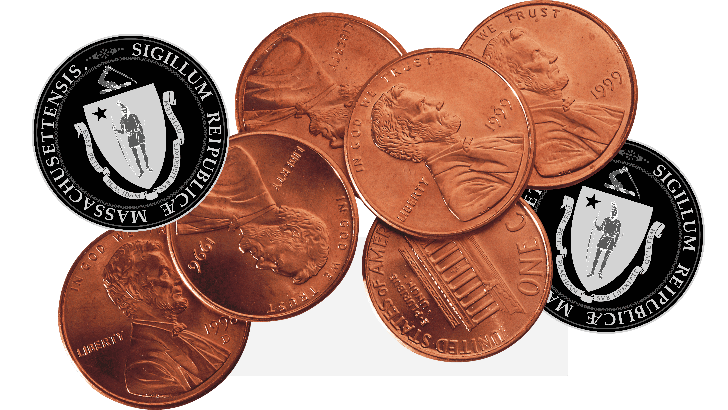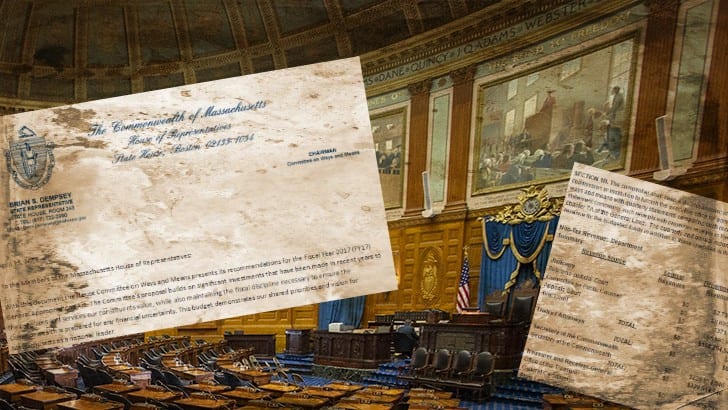
Gov. Baker’s proposed cuts throw gasoline on raging policy fire
February 21, 2018
BY JASON PRAMAS @JASONPRAMAS
A quarter-century ago, I lived in Lawrence for a few months. Because it was the closest place to Boston that I could find a cheap apartment on short notice. Unfortunately, I had a low-paying job in the city and couldn’t afford a car. So I took the commuter rail over an hour each way back and forth whenever I had a shift. Then at the end of the day, I was faced with getting to my apartment a couple of miles away from the station. Merrimack Valley Regional Transit Authority (MVRTA) bus service ran near my place. But even in the early 1990s with a state budget that looks more humane in retrospect, it was infrequent at best. And my bus dropped me off a few blocks away from where I lived when it was running.
Now that was during rush hour on a weekday. If I got home later than early evening—especially on weekends—MVRTA buses had already stopped running. I moved there in December. And until I moved back to Boston the following March, through what proved to be a very cold winter, I would often get off my train, watch all but a handful of people get into waiting cars and leave, and then begin the long, frozen slog home. Across the Merrimack River, on sidewalks that were mostly unshoveled and roads that were indifferently plowed.
Standing in the middle of Duck Bridge one Sunday night in mid-February during a fierce snowstorm, I experienced a moment of nearly perfect alienation. The scene was completely desolate. No vehicles were on the road. It was pitch black except for the occasional street light with the darker black of largely abandoned textile mills looming in the middle distance. Snow was piling up all around me. The brutal wind off the water cut through my coat. My sneakers were entirely insufficient to the task of keeping me consistently upright—let alone keeping my feet warm and dry. And I remember thinking that if I had slipped and fallen into the river, no one would have the slightest idea of where I’d gone until spring. Because in the era before ubiquitous cell phones or texters, I could not have typed “aaaaaaah” to my girlfriend as I fell. So who would be the wiser?
Fast-forward to this week, and that memory immediately sprang to mind when I read the transportation section of Gov. Charlie Baker’s annual state budget proposal. And discovered that he’s planning to level-fund the 15 regional transit authorities (RTAs) for $80.4 million, according to the Mass Budget and Policy Center, while most Bostonians are focusing on the ongoing fight to keep the MBTA solvent. Authorities like the Merrimack Valley Regional Transit Authority… which is already cutting back bus, van, and Boston commuter service and eliminating that Sunday service I kept missing in the early ’90s. Since level-funding means a budget cut, given annual cost increases. And it’s not looking like the legislature is likely to swoop in to save the RTAs later in our now-normalized austerity budget process.
After all, if the legions of working- and middle-class Bostonians that rely on public transit can’t yet force elected state officials to properly fund the MBTA, the smaller numbers of riders in outlying cities like Brockton, Fitchburg, Lowell, and Lawrence are in even worse straits. Especially when many of them are immigrants who can’t vote.
Yet the need for public transit gets more dire the farther you get from Boston. If you don’t have a car in places like Athol, Greenfield, Holyoke, and Pittsfield, literally your only inexpensive transit option is bus service run by your regional transit authority. Which I’ve already made quite clear is of limited usefulness at the best of times. RTAs don’t go everywhere riders need to go and don’t run many of the times riders need to use them. As I experienced during my brief, unpleasant Lawrence sojourn.
People without cars in the many parts of the state that aren’t reached by the MBTA’s main bus and subway lines are already at a major disadvantage in terms of their ability to access jobs, laundry, shopping, education, social services, daycare, and healthcare in the best of times. If RTA service continues to be whittled away year by year, eventually there will be no public transportation left in many locales. And taking an Uber or Lyft won’t be an option for people that can’t even afford a hike in bus fare. Even while those private transportation services are angling to replace public transit for those that can pay their largely unregulated fares.
That is no minor problem—lest readers think that only small numbers of people lack cars in Mass cities outside of the Boston metro area. It’s a major crisis. For example, according to a Governing magazine article looking at car ownership in US cities with a population over 100,000, 19.3 percent of Worcester households and 22.2 percent of Springfield households did not have a car in 2016. Meanwhile, my colleague Bill Shaner at Worcester Magazine just reported that “[t]he Worcester Regional Transit Authority Advisory Board voted to send proposed service cuts to a public hearing after decrying the possible changes as a ‘death spiral’ for the bus system.
He continued, “WRTA officials unveiled several possible measures to bridge a $1.2 million budget gap, due mostly to budget cuts to the RTA system at the state level. The possible measures include routes cut wholesale, cut weekend service, and diminished routes, which would increase wait times between buses.”
Both WRTA Board Chairman William Lehtola and WRTA Administrator Jonathan Church agreed that the system would “cease to exist in a few years” if the funding crisis continues unabated.
Meanwhile, the Republican reported that Springfield RTA “the Pioneer Valley Transit Authority has proposed a 25 percent across-the-board increase in fares and pass prices and a slate of service cutbacks, all to take force July 1.”
So make no mistake, this is a significant escalation in the war on Mass working families by Baker and any legislators that back similar cuts to public transit around the state. Cuts that RTAs have already been struggling with for years. As with the battle to save the MBTA and other public services, the RTAs can only be defended with a concerted fight from their riders. Whose goal must be to increase taxes on corporations and the rich in the Commonwealth, and to change state and local budget priorities to better serve the needs of all Mass residents.
Failing that, you’ll see a lot more people walking long distances in inclement weather statewide. And all too many of them won’t be able to escape their “transit desert” like I did. They will simply become more and more isolated. Until they literally disappear. The way I feared doing on a lonely bridge in the depths of a Merrimack Valley winter half a lifetime agone.
Townie (a worm’s eye view of the Mass power structure) is syndicated by the Boston Institute for Nonprofit Journalism. Jason Pramas is BINJ’s network director, and executive editor and associate publisher of DigBoston. Copyright 2018 Jason Pramas. Licensed for use by the Boston Institute for Nonprofit Journalism and media outlets in its network.




